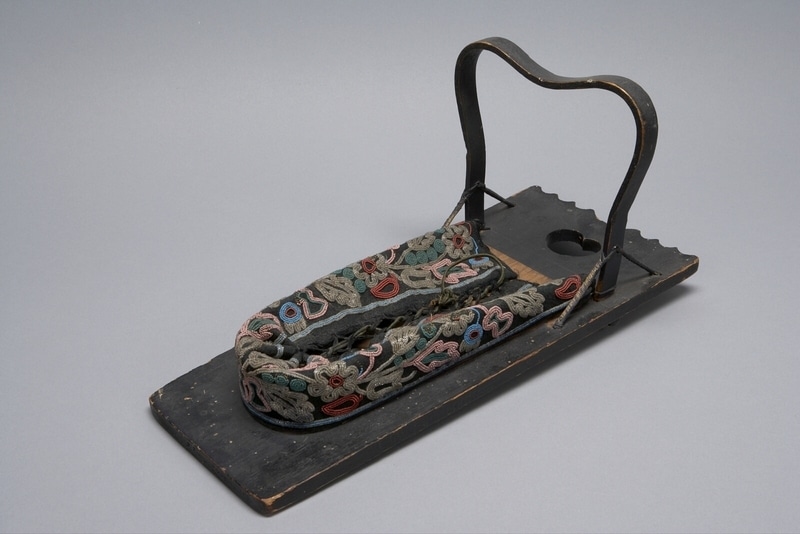Baby Carrier Item Number: Ne224 from the MOA: University of British Columbia



Description
Small wood, black-painted cradle board style baby carrier. U-shaped willow holder held in position by strips of tanned buckskin, accompanied by black cloth cover with canvas lining. String crisscross pattern down centre of cloth piece. Beaded floral designs in red, blue, pink, and green. Majority of flowers are clear beads. Edges lined with transparent blue and clear bead lines. Top of board is carved in wave design. Top's centre has heart-shaped hole. Above hole, bent band of wood with dip in centre is lashed twice, at both sides, with buckskin strips and held in place by a wood strip placed underneath board and nailed in three places. Inside is unpainted.
History Of Use
Board made from willow, cherry, or sumac. Traditionally, buckskin was used; later, canvas. Ornamentation symbolically gives blessing to baby. Made by women. Father's mother or closest elder relative sponsors up to six women to make the cradle board. Given to mother before baby's birth or in ceremony after baby is born. Traditionally, each was used only for one child. Later, they were passed down through the family. Also, traditionally, after a child outgrew its cradle, the piece was ceremonially dismantled. The board could be rested against a tree or hung when the mother was not carrying the baby on her back. Attached by buckskin band across chest and upper arms. Could be fastened to travois when the camp moved. The technique was taught to small girls through accurate reproductions in miniature, which they used as playthings. A U-shaped cradle board was more prominent among northwestern groups.
Narrative
Received from Mrs. H. C. Holmes.
Cultural Context
For carrying babies.
Item History
- Made in USA
- Owned by B.C. Provincial Museum before December 19, 1978
- Received from B.C. Provincial Museum (Transferring institution) on December 19, 1978
What
Who
- Culture
- Plains
- Previous Owner
- B.C. Provincial Museum
- Received from
- B.C. Provincial Museum (Transferring institution)
Where
- Holding Institution
- MOA: University of British Columbia
- Made in
- USA
When
- Ownership Date
- before December 19, 1978
- Acquisition Date
- on December 19, 1978
Other
- Item Classes
- beadwork
- Condition
- fair
- Accession Number
- 0504/0001